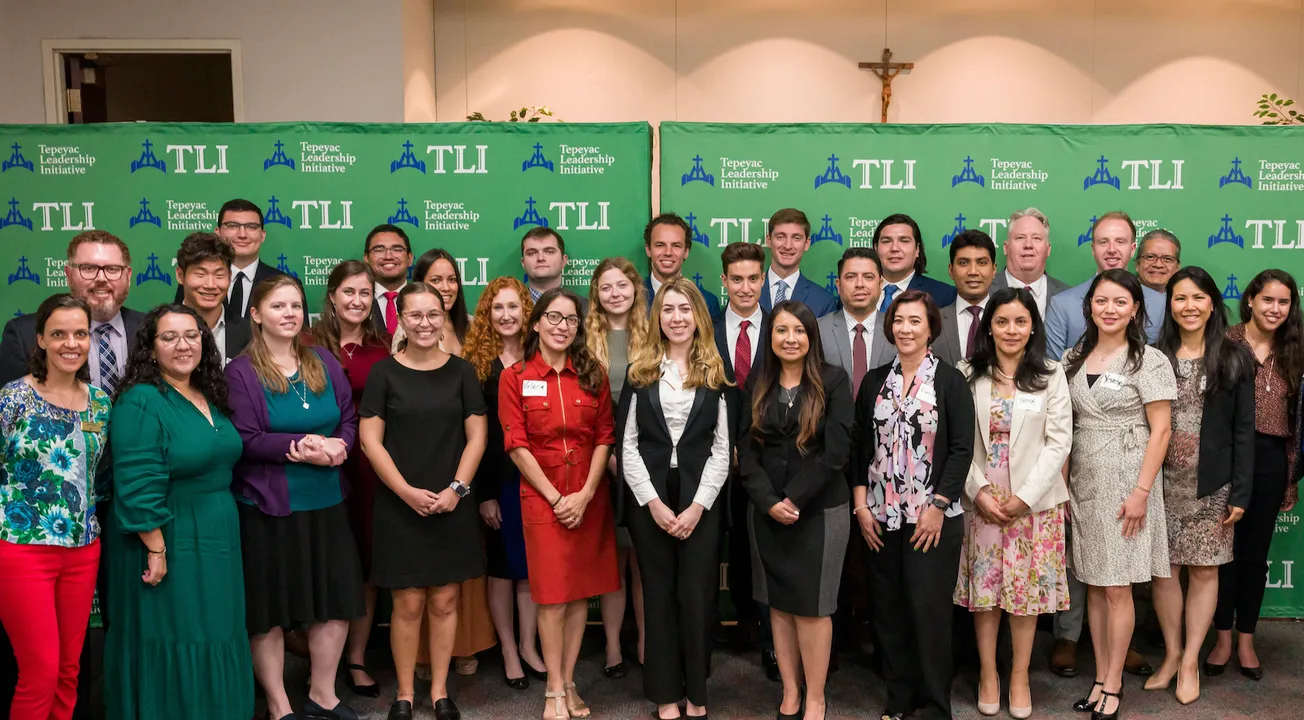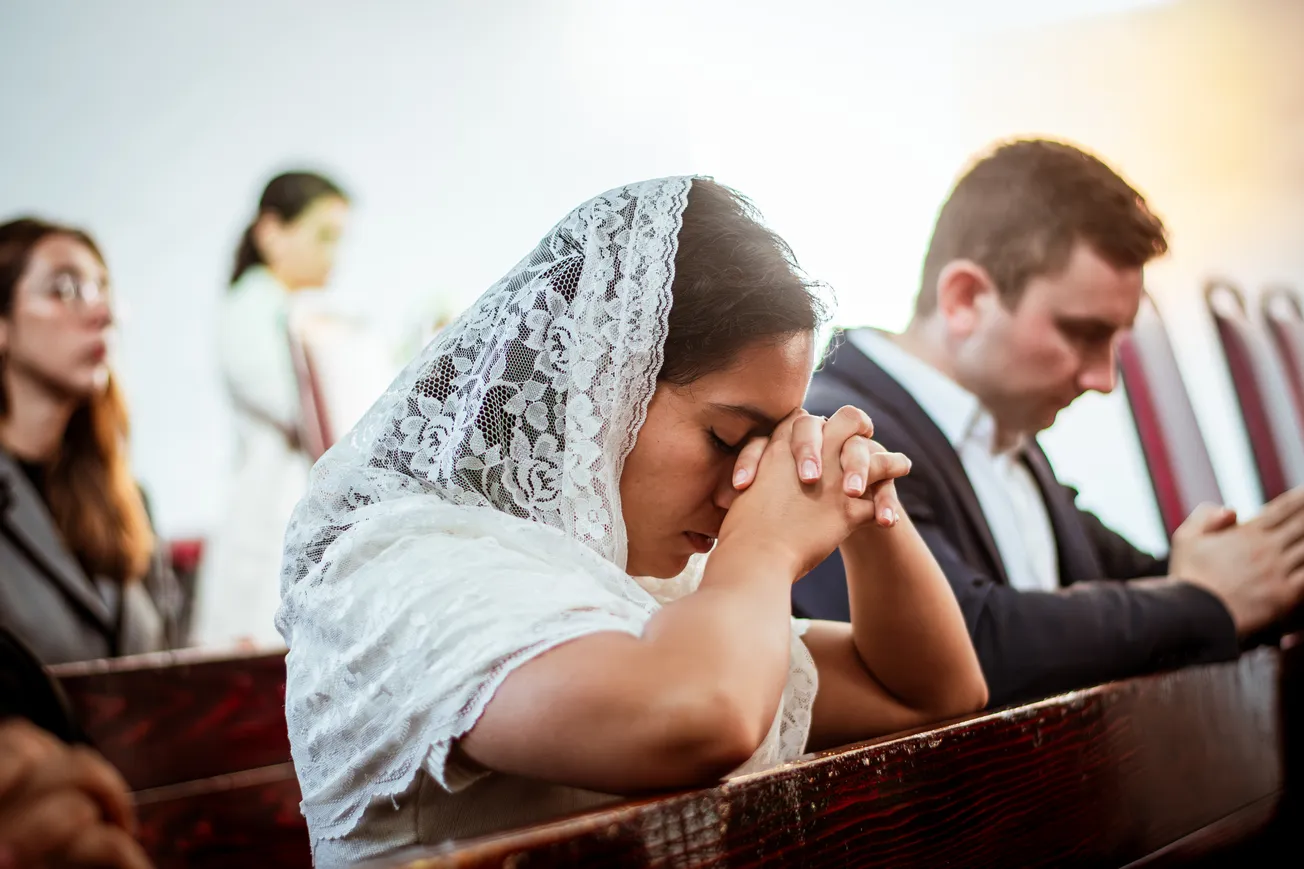How did the great cathedrals get built? How did the great universities and hospitals get funding? How did pagan empires become Christian? There were many contributing factors, but the conversion and support of the ‘elite and privileged’ and the development of true leaders cannot be ignored. Philanthropy from a king or empress can be understood, but what about from a former slave or a mother trying to raise a family? Yes, they too, can become saints known for their philanthropy and charitable giving!
There are as many definitions of philanthropy as there are of leadership. Just as true leadership for civil society, Virtuous Leadership, begins with the heart (Catholic Leadership for Civil Society, Pereyra and Monnin), so true philanthropy, based on the Greek etymology of the word, requires a true 'love of humanity' – caritas. Caritas, based on its Greek translation as love and charity, is considered the greatest of the three theological virtues (1 Cor 13:13); the Catechism of the Catholic Church has a whole section devoted to it (CCC 1822-1829).
Is there a difference between charitable giving and philanthropy? Some may use the terms interchangeably, but most people differentiate philanthropy based on scale, magnitude and duration of material contributions, especially money, to ‘organizations that help people’ - in alignment with the Cambridge Dictionary Online Definition. In today’s culture, ‘philanthropic contributions’ are often promoted as an investment opportunity. However, there is increased awareness of the risk of funding institutions not aligned with the common good and Catholic Social Teaching (CCC 1905-1912). Some may also ask, “How does building churches or supporting religious organizations affect the common good?” A recent summary of scientific studies revealed that religiosity, particularly regular service attendance, reduced depression, substance abuse and suicide while increasing coping, a sense of well-being and recovery from medical and mental illnesses. Koenig, Center for Spirituality, Theology and Health, Duke University Bottom line: participation in and giving to the right causes at the right time in the right way for the right reason can be a path to better health, common good and sainthood!
The following Patron Saints and Venerable Servant of God showed leadership in supporting the common good and perpetuating the Catholic faith. By doing so, they significantly impacted those around them and left a positive legacy for generations to come. Only three of the four might be called ‘philanthropists’ in the traditional sense – but the fourth, who gave her life for the sake of others and the freedom of faith - may have understood charity best of all. “Greater love has no man than this, that a man lay down his life for his friends.” (John 15:13)
St. Helena, Queen Mother of Constantine I, is the Patron Saint of archaeologists, new discoveries, converts, and those in difficult marriages. She came from humble beginnings, some even calling her ‘stabularia’ (stable maid). Constantius Chlorus divorced her when he needed to marry someone more politically advantageous. When Constantine, Helena’s and Constantius’s son, became an Emperor in the Roman Empire after his father's death, he restored Helena to a position as empress. She converted to Catholicism, and after Constantine's conversion, Helena went to the Holy Land (when she was over 75 years old) in search of the True Cross of the Crucifixion. The miraculous restoration of life to a person touched with the wood confirmed her discovery; the wood is now on display in Rome's Basilica of the Holy Cross of Jerusalem. Other artifacts Helena brought to Rome from Jerusalem include nails from the crucifixion and the Scala Sancta (Holy Stairs), which Jesus ascended to the praetorium of Pontius Pilate for sentencing. Helena commissioned the Church of the Nativity in Bethlehem and the Church of Eleona (the Ascension) on the Mount of Olives. Helena died in 328, just a few years after her pilgrimage. Constantine went on to commission more churches over the sites of her discoveries, including the Church of the Holy Sepulcher over Golgotha and the Tomb of Jesus. St. Helena’s feast day is August 18 in the Catholic Church and in May for Orthodox, Anglican, and Lutheran churches. Her faith and philanthropy preserved history and continue to inspire; numerous churches, buildings, locations and organizations are named after her.
St. Ferdinand III, King of Castile and Leon (Spain), is the Patron Saint of engineers. He converted mosques into Cathedrals and built new churches, monasteries, and hospitals as he united territories and liberated Spain from Moorish rule. Of note were the Cathedrals of Cordoba, Seville, Burgos, and Toledo, and the founding of the University of Salamanca. He had a devotion to the Blessed Virgin Mary and supported the Dominican, Trinitarian, Mercedarian and Franciscan orders, including becoming a Third Order Franciscan. He was a wise ruler who distributed goods fairly amongst those he governed and established a code of law respectful of the rights of individuals (at least when viewed through the historical lens of the time). He died in 1252, and his incorrupt body, still wearing his crown, can be seen at the Cathedral of Seville. Pope Clement X canonized him in 1671, and his feast day is May 30 with the Collect Prayer:
O God, Who was pleased that the blessed Ferdinand should fight Thy battles and overcome the enemies of faith; grant that, protected by his intercession, we may be delivered from the enemies of mind and body. Amen.
Venerable Pierre Toussaint is the Patron Saint of barbers and hair stylists. He was born into slavery in Haiti in 1766 and moved to New York City in 1797 with his master’s family. On coming to New York, he trained as a hairdresser for the elite, and his master allowed him to keep his earnings. After gaining his freedom upon Madame Berard’s death in 1807, Pierre married Marie Rose Juliette, whose freedom he purchased, and they adopted Pierre’s orphaned niece. They opened their home to other orphans and generously contributed to multiple charities. He nursed cholera patients during the epidemic and supported immigrants and the poor in numerous ways, including organizing a credit bureau and an employment agency. Pierre also contributed funds to building Old St. Patrick's Cathedral in New York City. He was very devout and attended daily mass at St. Peter's for 66 years. He died in 1853, and as part of the evaluation for canonization in 1989, they interred his body in the crypt below the main altar of St. Patrick’s Cathedral on Fifth Avenue, the first layperson to receive this honor. He was declared Venerable by St. Pope John Paul II in 1996. The following quote from the wealthy philanthropic former slave sums up his humble approach to life:
I have never felt I am a slave to any man or woman but I am a servant of Almighty God who made us all. When one of His children is in need, I am glad to be His slave.
St. Margaret Clitherow, The Pearl of York, is the Patron Saint of businesswomen, converts, martyrs, the Catholic Women's League and the Latin Mass Society. She converted to Catholicism in 1574, three years after marrying John Clitherow. John, although a member of the established Church of England, had a brother who was a Catholic priest. John supported Margaret in sheltering Catholic priests in their home and in places she rented for them. Margaret paid fines and went to prison for not attending the official state church; her third child was born in prison. They secretly sent their oldest son out of the country to become a priest. Authorities searched their home and discovered the 'Priest Hole.' Rather than contest the crime of harboring Catholic priests and going to trial (which would put others at risk), she accepted the death penalty even though pregnant. Margaret was stripped, forced to lie on the ground, and a large stone placed in the middle of her back. They laid her front door over her and put weights upon it to break her back and kill her; she was only 30 years old. Both sons became priests, and her daughter a nun. Margaret’s life provides examples for key points in the Catechism, from the right to religious freedom (CCC 2106-2109), to subsidiarity and the common good (CCC 1878-1885), to the duties and responsibility for ensuring a civil society (CCC 1913-1917), including responding to unjust laws (CCC 1902-1903). St. Pope Paul VI canonized her in 1970 as part of the 40 Martyrs of Wales and England, whose combined feast day is October 25 in Wales and May 4 in England.
We are not all called to be martyrs, but we are all called to become saints:
Practice hospitality ungrudgingly to one another. As each has received a gift, employ it for one another, as good stewards of God’s varied grace: whoever speaks, as one who renders oracles of God; whoever renders service, as one who renders it by the strength God supplies; in order that in everything God may be glorified through Jesus Christ. To Him belong glory and dominion for ever and ever. Amen (1 Peter 4:9-11)
Consider enrolling in the 2024 cohort of the Tepeyac Leadership Initiative to learn more about responding to God’s call to sainthood as a layperson and joining a community that will walk with you and support you.
And join us in prayer for the success of The Hour of the Laity: A Lay Catholic Conference (THL2023), November 2-5, Christ Cathedral, Orange County, CA. THL2023 is a national gathering for all lay Catholics who seek to grow as leaders to influence civil society with positive, healthy values grounded in truth and faith. It provides Catholic leadership formation to strengthen and enable the laity to become ambassadors of Christ in our day-to-day lives and the secular world! All experts, panelists, and keynotes are people who positively impact society and are sound examples of authentic Catholic leadership. For those unable to attend in person, an online, remote personal retreat option is now available!
We pray for continued growth in holiness and success in business ventures for all who attend in person and remotely! St. Helena, St. Ferdinand III, Venerable Pierre Toussaint and St. Margaret Clitherow – pray for us!
The Patron Saints Series is sponsored by our friends at Catholic Prayer Cards.

Visit Our Sponsors!
Catholic Association of Latino Leaders
Catholic Charities of Orange County
Catholic Cemeteries & Funeral Homes
Catholic Cemeteries & Mortuaries
Hoffman & Associates Building Corporation
Notre Dame Federal Credit Union






